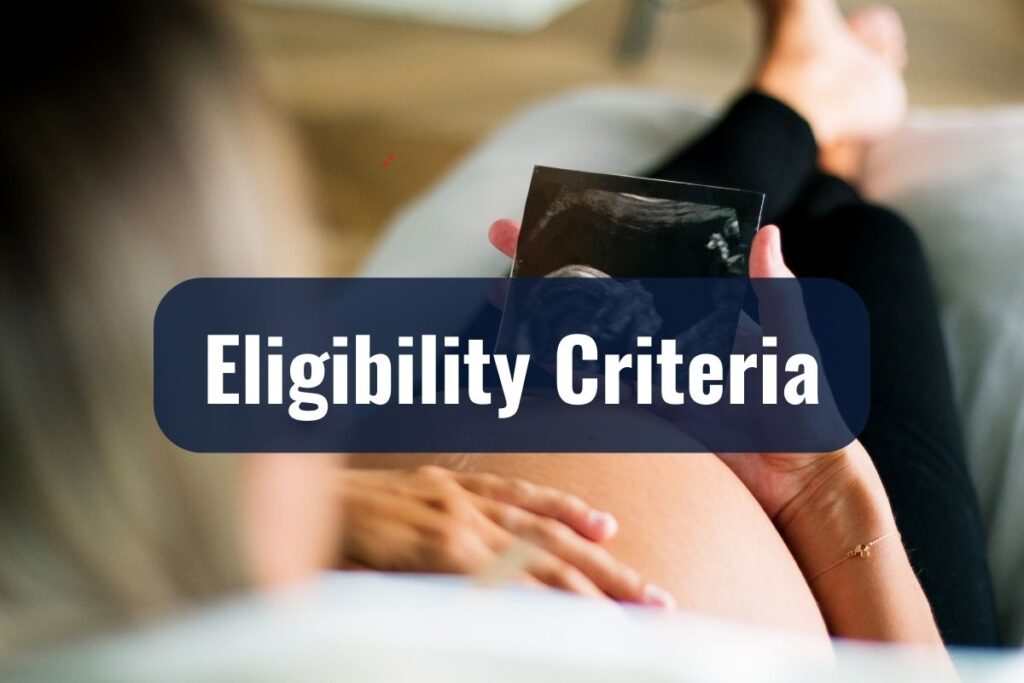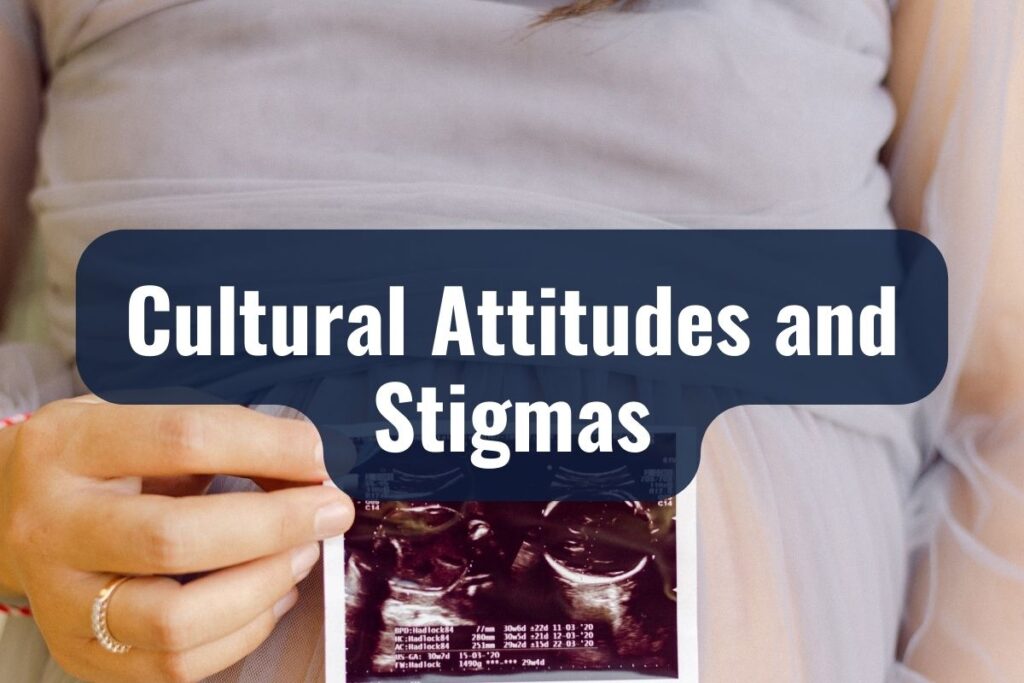One of the most pressing concerns for new parents is understanding maternity and parental leave policies, especially when you’re in a foreign country. If you’ve chosen to grow your family while living in Norway, it’s crucial to understand the ins and outs of maternity leave in this beautiful Nordic country.
Whether you’re pregnant, planning to be, or just exploring your options, this article aims to shed light on the intricacies of maternity leave in Norway.
Key Takeaways
- Norway’s maternity and parental leave policies are among the most generous globally, facilitated through the Nav system.
- Eligibility for parental benefits depends on employment status, income, and residency.
- Parents can choose between different types of leaves, including maternity, paternity, and shared parental leave.
- The duration of leave varies depending on the chosen payment rate, with options to extend it at a lower pay.
- Job security is legally protected during your leave, and employers often have their own supportive policies.
- Norway’s Cultural norms strongly support mothers and fathers taking an active role in early childcare.
Legal Framework for Maternity Leave in Norway
Understanding the legal aspects of maternity leave in Norway is crucial. Norway is known for its progressive social welfare system, which extends to parental benefits as well.
The Norwegian Labour and Welfare Administration, commonly known as Nav, is the cornerstone of parental benefits in Norway. This governmental organization is your go-to resource for applications, benefits calculation, and all maternity and parental leave information.
Nav’s role is vital because it informs you about your entitlements and guides you through the application process.
Statutory Rights and Regulations
In Norway, maternity and parental leave are protected by law. You’re entitled to take leave, and your job is protected during this period. Here’s what you should know:
- Norway offers a combined parental benefit period of up to 49 weeks at 100% pay or 59 weeks at 80% pay, including the maternal and paternal quotas.
- A “mum quota” and a “dad quota” exist within the total leave period, encouraging both parents to take an active role in child-rearing from the very beginning.
Parental Quotas (Mum Quota, Dad Quota)
You might hear about “quotas” quite often while navigating maternity leave in Norway. These quotas are reserved weeks of the parental benefit period that only the mother or the father can take.
- The “mum quota” is usually 15 weeks and is designed to be taken around the time of birth.
- The “dad quota” is also generally 15 weeks and is meant to ensure that fathers take an active part in their child’s early life. This quota has to be taken after the initial weeks designated for the mother but can otherwise be flexibly arranged.
The idea behind these quotas is not just legal but also cultural, reinforcing the belief in shared parenting responsibilities. By law, these reserved weeks cannot be transferred to the other parent.
Eligibility Criteria

Navigating the eligibility criteria for maternity leave can feel like venturing into a maze, especially when you’re already juggling so much as expectant parents.
Who is Eligible for Maternity Leave in Norway?
In Norway, maternity leave is generally available to all employed women, but let’s break down some specifics to make sure you fully understand your eligibility:
- Full-time Employees: If you’re employed full-time, you’re eligible for the full range of benefits under the Norwegian system, as long as you meet other criteria such as the minimum period of employment and residence requirements.
- Part-time Employees: Even if you work part-time, you’re still entitled to maternity benefits. However, the amount you receive may be pro-rated based on your working hours.
- Contract-based or Freelancers: If you’re not in traditional employment, you might still qualify for parental benefits. However, there are additional requirements and conditions you’ll need to meet, such as demonstrating a consistent income over a certain period.
Residence Requirements
Norway has specific residence requirements for maternity benefits. Typically, you or your spouse must have been a resident of Norway for at least six months before you can claim benefits. It’s worth noting that the rules can differ slightly for EEA citizens, so if you’re from an EEA country, you might want to double-check these specifics.
You might be asking, “What if I’ve just moved to Norway?” In this case, you should check the possibility of transferring your social security rights from your previous country of residence. Agreements between Norway and other countries, especially within the EEA, often allow for this.
Types of Leave
While the term “maternity leave” is often used as a catch-all phrase, it’s important to recognize that parental leave in Norway is structured to be inclusive and flexible, catering to various family needs and situations.
| Type of Leave | Duration (Weeks) | Description |
| Maternity Leave | 3 weeks before and 6 weeks after birth | Reserved for the mother, before and immediately after childbirth. |
| Paternity Leave (Daddy Quota) | 15 weeks | Reserved specifically for the father, to encourage shared responsibility. |
| Shared Parental Leave | Up to 46 or 56 weeks, depending on the payment rate | Can be divided between both parents, offering flexibility. |
| Extended Leave | Up to 36 or 46 weeks at 80% pay or 26 or 36 weeks at 100% pay | Extended parental leave options with different payment rates. |
Maternity Leave
In Norway, maternity leave specifically refers to the time taken off by mothers around the birth of their child. The initial weeks—typically around 3 weeks before the due date—are designated as maternity leave and are part of what’s often called the “mum quota.”
When: Usually starts 3 weeks before the due date.
Duration: This period is part of the 49 or 59 weeks of parental benefits you can claim.
Paternity Leave
Fathers aren’t left out of the equation in Norway. Paternity leave, often included in what’s known as the “dad quota,” allows fathers to bond with their newborns and share in the early responsibilities of childcare.
When: Can be taken after the “mum quota” weeks are completed.
Duration: Generally 15 weeks, but can be flexibly arranged within the total parental benefit period.
This is where Norway really shines in terms of gender equality and shared parenting. After the “mum” and “dad quotas” are completed, the remaining weeks can be shared between both parents as they see fit.
Flexible: You can split these weeks as you wish, even taking time off simultaneously if that suits your family best.
Choices: Choose between 100% pay for a shorter period (49 weeks) or 80% pay for an extended period (59 weeks).
Related: Parental Leave in Norway [Expat Guide 2023]
Duration of Leave

Understanding the duration of your leave can be like solving a puzzle—each piece needs to fit just right for the full picture to come into view. So let’s dive into the specifics to help you and your family find that perfect fit.
Total Weeks Available
In Norway, you have the option of choosing between:
- 49 weeks of parental leave with 100% salary coverage
- 59 weeks of parental leave with 80% salary coverage
These weeks include both the “mum quota” and “dad quota,” as well as the flexible weeks that can be shared between both parents.
Paid vs. Unpaid Leave
It’s important to clarify that all these weeks can be paid weeks based on your salary and employment status. Unpaid leave options exist too, but most parents opt for paid leave for financial stability.
Fully Paid: If you meet the eligibility criteria and your salary is within the limits defined by Nav, you could enjoy a fully paid leave.
Partially Paid: In some circumstances, such as for part-time or contract-based employees, the leave may be partially paid based on a pro-rated calculation of your income.
Splitting or Extending the Leave
Norwegian policies are quite flexible when it comes to how you can take these weeks.
Simultaneously: Both parents can choose to take their leaves simultaneously. This could be beneficial for families who prefer focused, collective time with their newborn.
Sequentially: Alternatively, you can take it in turns, which extends the total period one parent can be at home with the child.
Extension: There are possibilities for extending your leave under special circumstances, such as medical needs for the mother or child. However, these additional weeks may be unpaid.
Financial Support
The good news is that Norway has a generous parental benefits system designed to support your family during this transformative time. Let’s delve into the financial details, so you can focus more on those precious first smiles and less on crunching numbers.
How Parental Benefits Are Calculated
Parental benefits in Norway are calculated based on your income for the last calendar year before your leave starts. This calculation is performed by Nav, the authority overseeing welfare and employment in Norway.
Percentage of Income: Depending on whether you choose 49 weeks at 100% or 59 weeks at 80%, the benefits are calculated as a percentage of your annual income up to a certain cap.
Income Cap: The benefits are capped at a particular level, which is adjusted yearly. As of my last update in 2021, the cap was 6G (G being the National Insurance basic amount).
Tax Implications
Parental benefits are considered taxable income. However, Nav usually withholds the estimated tax amount before disbursing the benefits. This means you won’t get a surprise tax bill at the end of the year just because you took parental leave.
Benefits for Low-Income Families
Norway’s system aims to be inclusive. If your income is below a certain threshold, you may still qualify for a minimum level of parental benefits to ensure financial stability during your leave.
Minimum Benefits: These are typically set as a flat rate and are designed to provide support to parents who may not have sufficient income for a percentage-based benefit.
Additional Support: Some families might be eligible for additional support programs through Nav, depending on various circumstances like single parenthood or specific healthcare needs.
How to Apply

Applying for maternity and parental benefits might initially seem like navigating a bureaucratic labyrinth. But don’t fret—we’re here to illuminate the path for you. Consider this section your roadmap to successfully applying for your well-deserved benefits.
The Norwegian Labour and Welfare Administration, or Nav, is your primary point of contact for all things related to parental benefits. Nav’s online portal will be your best friend throughout the application process.
Create an Account: If you haven’t already, create an account on the Nav website. This account will serve as your digital mailbox for all communications related to your benefits.
Important Forms: Once logged in, you’ll find a variety of forms. The most important one for maternity and parental benefits is titled “Application for Parental Benefits” (Foreldrepenger).
Required Documentation
Before you begin filling out forms, it’s essential to gather the necessary documentation to streamline the process.
- Medical Certificate: A medical certificate confirming the pregnancy and expected due date is mandatory. Your healthcare provider can assist with this.
- Employment Details: You’ll need to provide information about your employment status, income, and how you plan to divide the leave between parents, if applicable.
- Passport or ID: Proof of identity and residence will be required, especially if you’re not a Norwegian citizen.
Filling Out the Application
The online application form will guide you through a series of questions related to your personal circumstances, employment, and how you wish to take the leave.
English Help: The Nav website can be translated into English, making it more accessible if Norwegian isn’t your first language.
Timeline: Try to submit your application at least eight weeks before the planned start of your maternity leave to allow adequate processing time.
Confirmation and Follow-up
After submission, you’ll receive a confirmation, and Nav will start processing your application. You’ll be updated through your online account or via post. If further documentation or clarifications are needed, Nav will let you know.
Queries: Should you have any questions during the process, Nav’s customer service is usually just a phone call or a message away.
Workplace Policies and Considerations
Embarking on maternity or parental leave often brings up questions and concerns about your professional life. How will my employer react? Will I still have my job when I come back? These questions are only natural but Norway’s robust labor laws are designed to protect you during this period.
Your Job Security
One of the most comforting aspects of Norwegian labor laws is the strong job security afforded to parents going on leave.
Protected Position: Legally, your job position is protected during your leave. This means your employer cannot terminate you solely based on your taking of parental leave.
Return to Work: Upon returning from leave, you are generally entitled to resume your original position or one of equal pay and responsibility.
Communication with Your Employer
It’s crucial to maintain clear and open communication with your employer throughout your leave process.
Advance Notice: It’s considered best practice to inform your employer as soon as you’re comfortable sharing the news of your pregnancy and intended leave.
Written Confirmation: Some workplaces may require a written application or notice for record-keeping, so be sure to inquire about this.
Company-Specific Policies
While national laws provide a framework, companies often have additional policies that can work in your favor.
Some employers offer additional benefits, often called “top-ups,” that supplement your parental benefits from Nav.
Certain workplaces have policies that allow more flexible arrangements when you return, such as part-time work or flexible hours, to ease the transition back to work.
Co-Workers and Team Dynamics
Maternity and parental leave is a collective experience, impacting you and your colleagues.
Delegation Plans: Before you go on leave, discussing how your responsibilities will be managed in your absence is generally a good idea.
Keeping in Touch: While not mandatory, some people have occasional check-ins with their team during their leave to smooth out the transition back.
Cultural Attitudes and Stigmas

As you prepare for this momentous phase of life, you may find that cultural attitudes and stigmas—both from your own background and within Norwegian society—can add a layer of complexity.
While Norway is often heralded for its progressive parental leave policies, it’s essential to acknowledge that cultural norms can vary and may impact your experience. Let’s explore some of these cultural aspects that might come into play.
Norwegian Views on Parental Leave
Norway’s culture is generally supportive of both mothers and fathers taking parental leave.
There’s a strong emphasis on gender equality, and it’s commonplace for both parents to take time off to care for their children.
Because of this cultural acceptance, you may find that there’s a social expectation for fathers to take their share of the “dad quota.”
Cultural Differences from Your Home Country
Depending on where you’re originally from, you might find that Norwegian attitudes toward parental leave are different from what you’re accustomed to.
In some cultures, the extended family plays a significant role in early childcare, which might not be the case if you’re living as an expat in Norway.
If you come from a work-centric culture, you might initially feel uneasy about taking an extended leave. In Norway, this time is seen as valuable and essential for family well-being.
While you’ll find plenty of support for taking parental leave, you might also experience some subtle or not-so-subtle pressures.
‘Perfect Parenting’: Social media and friend circles can sometimes project an ideal of ‘perfect parenting,’ which can be both encouraging and overwhelming.
Traditional Roles: Despite progressive policies, you may encounter pockets of traditional attitudes, where people have fixed ideas about gender roles in parenting.
Related: International Schools in Norway [In-Depth 2023 Guide]
Overcoming Cultural Stigmas
It’s okay to feel a mix of emotions as you navigate the landscape of cultural expectations and realities.
Don’t hesitate to have frank discussions with your partner about your individual expectations and anxieties.
Connecting with other expat parents or local support groups can provide valuable insights and emotional support.
Understanding cultural attitudes and stigmas is like adding another layer to the rich tapestry of your parental leave experience. There’s no one-size-fits-all approach to parenting.
You and your family are unique, and what works best for you is what truly matters. Your journey through parental leave is your own, and it’s more than okay to carve out a path that respects both your cultural background and the new norms you encounter in Norway.
Additional Resources
Nav: This is your go-to platform for all legal and financial aspects of parental leave. Nav offers detailed guides and an FAQ section that can answer most of your questions.
The Norwegian Directorate for Children, Youth and Family Affairs (Bufdir): This agency provides valuable resources, particularly on child welfare and family services.
Helsenorge: This official health portal can provide medical advice and guidelines on pregnancy, childbirth, and childcare.


